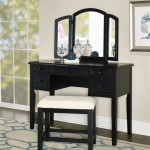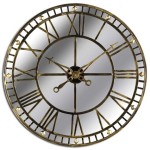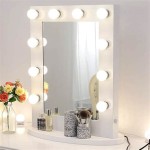Antique Oak Hall Trees with Bench and Mirror
Antique oak hall trees with a bench and mirror represent both functional furniture and decorative art. These pieces, popular in the late 19th and early 20th centuries, served as a practical entryway solution while simultaneously adding a touch of elegance to the home. They offered a place to store coats, hats, and umbrellas, and the mirror provided a last-minute opportunity to check one's appearance before venturing out.
Key Features Defining an Antique Oak Hall Tree:
Several key features distinguish an authentic antique oak hall tree from newer reproductions. Understanding these characteristics aids in identification and valuation.
Construction and Materials:
Antique hall trees were typically constructed from solid oak, known for its durability and attractive grain. Examine the piece for signs of solid wood construction versus veneer. Joints were often meticulously crafted using traditional methods like dovetailing and mortise and tenon joinery. The presence of these techniques often signifies quality and age. Look for the warm patina that develops on aged oak over time. This natural aging process results in a rich, mellow color rarely replicated in newer pieces.
Design Elements:
Hall trees from different periods exhibit stylistic variations reflecting the prevailing design trends of their time. The Victorian era (late 19th century) often featured ornate carvings, intricate detailing, and beveled mirrors. The Arts and Crafts movement (late 19th and early 20th centuries) embraced simpler, more rectilinear forms with an emphasis on functionality. The Mission style, a subset of Arts and Crafts, featured clean lines, flat panels, and minimal ornamentation.
The Bench:
The bench component provides seating for putting on or removing shoes. Examine the bench for storage options. Some antique hall trees include a compartment beneath the seat for storing shoes, boots, and other items. Consider the bench height. Older benches may be lower than contemporary versions, reflecting the footwear styles of the time.
The Mirror:
The mirror is a prominent feature of the hall tree, providing both function and aesthetic appeal. Antique mirrors often feature a beveled edge, a decorative technique that adds depth and sparkle. Check the mirror for signs of age, such as foxing or silvering loss, which can contribute to the piece's antique charm. Note the shape and size of the mirror. Larger, elaborately framed mirrors were common in Victorian-era pieces, while simpler, rectangular mirrors are characteristic of the Arts and Crafts period.
The Hooks and Coat Rack:
The hooks and coat rack are essential functional elements. Examine the hooks for their design and material. Brass or wrought iron hooks are common in antique hall trees. Consider the number and placement of hooks. Victorian pieces may feature numerous hooks arranged in an ornate pattern, while simpler designs have fewer hooks.
Condition and Restoration:
The condition of an antique hall tree significantly impacts its value. Look for signs of wear and tear, such as scratches, dents, and repairs. Minor imperfections are expected in antique furniture and can add to its character. Assess whether any restoration work has been done. Professional restoration, when done properly, can enhance the value of a piece. However, over-restoration can detract from its authenticity.
Identifying Reproductions:
Be aware of reproductions when searching for an antique oak hall tree. Examine the wood for artificial distressing, a technique used to mimic the appearance of age. Look for inconsistencies in the hardware or joinery that might indicate a newer piece. Compare the piece's style and construction details to known characteristics of antique hall trees from different periods.
Value and Appraisal:
The value of an antique oak hall tree depends on several factors. Rarity, condition, age, and provenance all play a role in determining a piece's worth. Consult with a qualified antique appraiser to obtain a professional assessment of the hall tree’s value. Research comparable pieces that have sold at auction or through antique dealers to get a sense of market prices.
Caring for an Antique Oak Hall Tree:
Proper care ensures the longevity and preservation of an antique oak hall tree. Dust regularly with a soft cloth. Avoid using harsh chemicals or abrasive cleaners, which can damage the finish. Wax the wood periodically to protect it and maintain its luster. Keep the hall tree away from direct sunlight and excessive humidity, which can cause fading and warping. Handle the piece with care to avoid further damage or wear.

Antique Large Oak Hall Tree Bench W Mirror Excellent Condition Long Valley Traders

Antique Hall Tree With Mirror Oddities Curiosities Crafts And More We Must B Oak Furniture Vintage

Antique 1900s American Oak Hall Seat Tree With Hooks Mirror Storage Bench Chairish

Oak Hall Tree With Shaped Mirror Wooden Nickel Antiques

Antique 1900s American Oak Hall Seat Tree With Hooks Mirror Storage Bench Chairish

Oak Hall Tree With Beveled Back Mirror Wooden Nickel Antiques

Antique Hall Tree Lot 178 With Storage Coat Rack

Vintage Hall Tree At The Missing Piece

43 Antique Hall Trees Benches Ideas Tree Bench Victorian Furniture

Antique 1900s American Oak Hall Seat Tree With Hooks Mirror Storage Bench Chairish








